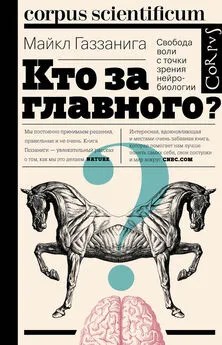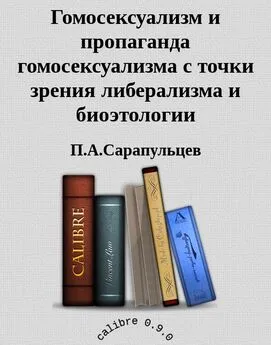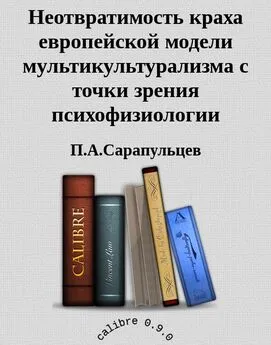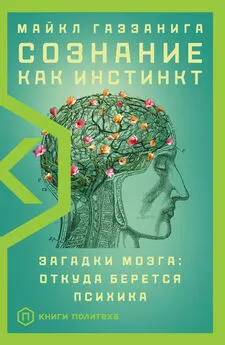Майкл Газзанига - Кто за главного? Свобода воли с точки зрения нейробиологии
- Название:Кто за главного? Свобода воли с точки зрения нейробиологии
- Автор:
- Жанр:
- Издательство:Литагент Corpus
- Год:2017
- Город:Москва
- ISBN:978-5-17-085436-3
- Рейтинг:
- Избранное:Добавить в избранное
-
Отзывы:
-
Ваша оценка:
Майкл Газзанига - Кто за главного? Свобода воли с точки зрения нейробиологии краткое содержание
Кто за главного? Свобода воли с точки зрения нейробиологии - читать онлайн бесплатно ознакомительный отрывок
Интервал:
Закладка:
Bystron I. et al. (2006) The first neurons of the human cerebral cortex . Nature Neuroscience. 9: 880-886.
68
Galton F. (1879) Psychometric experiments . Brain. 2: 149-162.
69
Caramazza A., Shelton J. R. (1998) Domain-specific knowledge systems in the brain: the animate-inanimate distinction . Journal of Cognitive Neuroscience. 10 (1): 1-34.
70
Boyer P., Barrett H. C. (2005) Domain specificity and intuitive ontology . In: Buss D. M. (ed.) The handbook of evolutionary psychology (P. 96-118). NY: Wiley.
71
Barrett H. C. (2005) Adaptations to predators and prey . In: Buss D. M. (ed.) The handbook of evolutionary psychology (P. 200223). NY: Wiley.
72
Coss R. G. et al. (1993) Development of antisnake defenses in California ground squirrels (Spermophilus beecheyi): II. Microevolutionary effects of relaxed selection from rattlesnakes . Behaviour. 124 (1-2): 137-164.
73
См: Stamm J. S., Sperry R. W. (1957) Function of corpus callosum in contralateral transfer of somesthetic discrimination in cats . Journal of Comparative Physiological Psychology. 50 (2): 138-143; а также Glickstein M., Sperry R. W. (1960) Intermanual somesthetic transfer in split-brain rhesus monkeys . Journal of Comparative Physiological Psychology. 53 (4): 322-327.
74
Akelaitis A. J. (1945) Studies on the corpus callosum: IV. Diagnostic dyspraxia in epileptics following partial and complete section of the corpus callosum . American Journal of Psychiatry. 101: 594 –599.
75
См.: Gazzaniga M. S. et al. (1962) Some functional effects of sectioning the cerebral commissures in man . Proceedings of the National Academy of Sciences of the United States of America. 48 (10): 1765-1769; Gazzaniga M. S. et al. (1963) Laterality effects in somesthesis following cerebral commissurotomy in man . Neuropsychologia. 1: 209-215; Gazzaniga M. S. et al. (1965) Observations on visual perception after disconnection of the cerebral hemispheres in man . Brain. 88: 221-236; а также Gazzaniga M. S., Sperry R. W. (1967) Language after section of the cerebral commissures . Brain. 90: 131-348.
76
Van Wagenen W. P., Herren R. Y. (1940) Surgical division of commissural pathways in the corpus callosum: relation to spread of an epileptic attack . Archives of Neurology and Psychiatry. 44 (4): 740-759.
77
Akelaitis A. J. (1941) Studies on the corpus callosum: II. The higher visual functions in each homonymous field following complete section of the corpus callosum . Archives of Neurology and Psychiatry. 45 (5): 788-796.
78
Sperry R. (1984) Consciousness, personal identity and the divided brain . Neuropsychologia. 22 (6): 661-673.
79
Kutas M. et al. (1990) Late positive event-related potentials after commissural section in humans . Journal of Cognitive Neuroscience. 2 (3): 258-271.
80
Gazzaniga M. S. et al. (1967) Dyspraxia following division of the cerebral commissures . Archives of Neurology. 16 (6): 606-612.
81
См.: Nass R. D., Gazzaniga M. S. (1987) Cerebral lateralization and specialization in human central nervous system . In: Plum F. (ed.) Handbook of physiology (Sec. 1, V. 5, P. 701761). Bethesda, MD: American Physiological Society; а также Zaidel E. (1990) Language functions in the two hemispheres following cerebral commissurotomy and hemispherectomy . In: Boller F., Grafman J. (eds.) Handbook of neuropsychology (V. 4, P. 115–150). Amsterdam: Elsevier.
82
Gazzaniga M. S., Smylie C. S. (1990) Hemispheric mechanisms controlling voluntary and spontaneous facial expressions . Journal of Cognitive Neuroscience. 2 (3): 239-245.
83
Sperry R. W. (1968) Hemisphere deconnection and unity in conscious awareness . American Psychologist. 23 (10): 723-733.
84
Gazzaniga M. S. (1972) One brain – two minds? American Scientist. 60 (3): 311-317.
Интервал:
Закладка:





